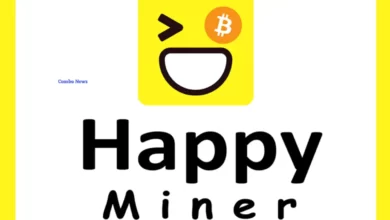Digital Currency – A Virtual Twist to the Physical Currency

The starting of a new fiscal year might see some unexpected yet revolutionary changes in the finance of the country. While presenting the annual budget of the country on Tuesday, finance minister Nirmala Sitharaman introduced the idea of launching a new, digital currency that would “give a big boost to the digital economy”. The decision makes India the latest addition to join the rush to create state-backed virtual currency. It will be introduced by the central bank and will use “blockchain and other technologies”. Further details on what it might be used for, its impact, and other issues have not been commented on as of now.
The country has always been showing its concerns about the dangers of using cryptocurrencies and says that they can be used to finance terrorism or used for money laundering. The Center has been deliberating on how to best regulate these digital assets, even considering the idea of banning crypto. In 2018, the Reserve Bank of India did ban the trading of cryptocurrencies, which was removed by the country’s supreme court two years later. Though the government might have explored the idea of prohibiting all private cryptocurrencies in India, no such step was really taken. The introduction of the digital rupee, therefore, might be considered as a countermeasure for the Center’s concern towards decentralized digital currencies.
Digital payments have been growing in popularity ever since late 2016,
with PM Narendra Modi focusing on Digital India campaigns and the banning of the country’s two biggest rupee banknotes. Apart from the already popular players like Paytm, Google and Facebook also seemed to join the country’s cashless market. The decision to launch the digital currencies puts our country on equal footing with countries like China which has been trialing its digital yuan for the last two years, and Europe and the United States both of which have been exploring the possibilities of using digital euro and digital dollar.
Does this mean that crypto might be discontinued? It is very unlikely. The finance minister in her speech on Tuesday, commented on it saying that authorities are willing to allow the continuation of cryptocurrency trading in the country, however, there will be due regulations imposed on them. Under the budget for the financial year 2022-23, income collected from crypto has been placed under one of the highest tax return categories. The minister said that the government would impose a whopping 30% tax on income from virtual digital assets.
Making a comment on this, the minister said, “There has been a phenomenal increase in transactions in virtual digital assets”, “The magnitude and frequency of these transactions have made it imperative to provide for a specific tax regime.” Expressing his approval of the step taken, Sumit Gupta, co-founder of CoinDCX, India’s first crypto unicorn said, “Taxation of virtual digital assets or crypto is a step in the right direction. It gives much-needed clarity and confidence to the industry.” He also thinks that taxing the returns from crypto is a plus, however, the rates that are set are too high, according to him.
The decision and the statement of allowing the continuation of crypto evokes a sigh of relief from all the crypto investors in India. Expressing his views on this, Nischal Shetty, the founder of cryptocurrency platform WazirX, tweeted on Tuesday, “Hope to see a reduction of crypto ban fear in India.” “Lot to unpack here but overall, this is a very positive step forward for the crypto ecosystem in India.”
Though it doesn’t replace cryptocurrency, digital rupee, or in other words, Central Bank Digital Currency (CBDC) is meant to take inspiration from cryptocurrencies like Bitcoin, but unlike them, it will be centralized. RBI defines CBDC as a legal tender that is issued by a central bank in a digital form, which is analogous to our paper currency. Adding on the advantages of such a currency, RRBI said that unlike a physical one, CDBC can never be torn, burnt, or physically damaged. They can’t be lost either. This will make their life span indefinite when compared to paper notes. Going digital with currencies also means saving costs on the printing of physical ones. The transactions will be instantaneous. The fact that it will be regulated by a central body, mitigated the volatility risk that is often associated with crypto, giving the citizens the edge of the trustable factor that is more often than not absent while trading cryptocurrency. Commenting on the use of this new system, Sitharaman added, “Digital currency will also lead to a more efficient and cheaper currency management system.”
When the finance minister said that the system will be based on the usage of blockchain and other technologies, this might spark a seed of doubt, since blockchain technology, by nature, is decentralized. This brings increased resilience to the data not only against errors but also cyber threats. The digital rupee, however, will have a slightly different version of this. With RBI controlling the issuance as well as distribution of CDBC, we won’t really have the doubt of the dangers of using and dealing with a network of computers with anonymous addresses that store our assets.
As a report by PWC puts forth, CDBC may need “an underlying system for issuance and distribution to the public”. The RBI might have to also include other public and private banks, payment service providers (PSPs), and operators on the network. The RBI surely will have to set up such a network but this blockchain network will be limited to the bank and the associated entities. Surely the idea in itself is representative of true modernity and thoughtful procedures. But how well does the idea sore depends on how it’s executed. Not only the execution but its accessibility, usability, in the long run, the transparency it claims to provide are some of the factors that need to be taken under consideration before the plan is considered a complete success. That is something that will come to light as the plan unfolds.
Also Read: Budget 2022 Released- Here’s what you need to know








